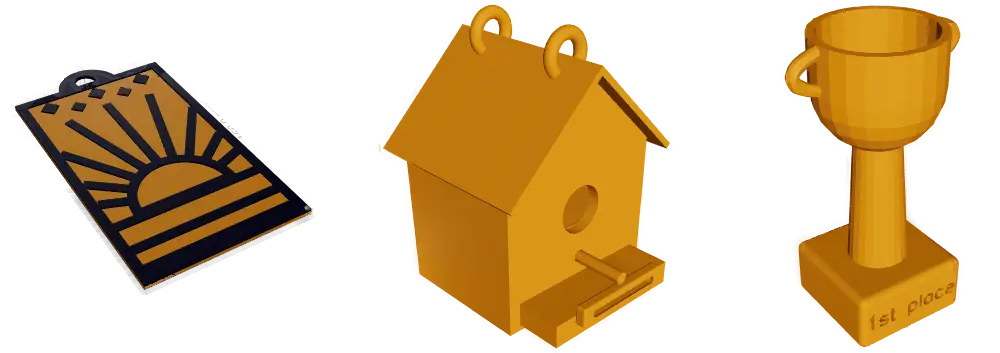GrandpaCAD: My Grandpa, AI, and the State of CAD
Updated: With the launch of Blender backend, GrandpaCAD becomes much more powerful, I updated this blog post to reflect the current state.
I started GrandpaCAD for a simple reason: my grandpa loves 3D printing but finds modeling software a total pain to use. I just wanted to build something that would let him create whatever he could think of, without needing a degree in computer-aided design.
So, where are we at with that dream? Well, it's complicated. And I figured it's a good time to share the current state of GrandpaCAD, the good, the bad, and the ridiculously ambitious future I'm aiming for.
The "Good Enough for Grandpa" State of Affairs
Right now, GrandpaCAD is... pretty good for basic stuff! You're not going to design a skyscraper with it, but if you want to whip up a simple part or a fun little model, it gets the job done. With a bit of creative prompting, you can get some surprisingly decent results.
Here are a few things people (and by people, I mostly mean me) have made:
- A classic birdhouse.
- A name tag for my coworking space.
- A customizable throphy cup

Let's Be Real: What is "CAD" Anyway?
"CAD" is a massive acronym. It covers everything from designing a simple nut and bolt to engineering a bridge. The spectrum of what CAD software can do is ridiculously wide.
GrandpaCAD, in its current form, can realistically do maybe... 1% of that. And that's probably generous.
The goal isn't to build an enterprise-grade modeling tool or a pipeline for creating game assets. It's to empower my grandpa, and people like him, to turn their ideas into physical objects. The focus is on accessibility, not complexity.
Who is this for? (And who it's not for)
If you're a professional looking for an enterprise tool, you should probably check out something like zoo.dev. It's powerful, but its interface isn't exactly grandpa-friendly. If you're making assets for video games, sloyd.ai is your jam.
GrandpaCAD is for the absolute beginner, the curious hobbyist, the person who just wants to make a thing without getting lost in menus. I want to keep it simple, but make it powerful in its own way.
The Not-So-Pretty Parts
Of course, it's not all sunshine and 3D-printed roses. The AI struggles with a bunch of things. It often messes up placing objects correctly relative to each other. Weirdly rotates some parts or comes up with weird solutions to problems.
It's very much work in progress, but I feel like in last 6 months I've probably improved it five fold (generations fail much less often, the results are much more often what you asked for, etc...).
The Big, Hairy, Audacious Goal
So what's the grand vision? I want you to be able to ask GrandpaCAD to make anything, and it just... does it. As the underlying AI models get smarter, GrandpaCAD will get better. It's as simple as that.
My ultimate dream? If 3D printers keep improving at their current pace, we could have basic versions of Star Trek's replicators in our homes in the next 5-10 years. Imagine just asking your computer for a fork, and it prints one out. That's the future I'm building towards.
The Road Ahead
So how do we get from here to there? I've split the work into two buckets: things I can control, and things I have to wait for.
Things depending on LLM development (aka The AI Gods):
- Making it better: As the models improve, so will the quality of the generations.
- Making it faster: Response times should go down.
- Making it cheaper: The cost per generation should drop.
Things I'm working on in the meantime:
- Improving the base generation: I'm constantly tweaking the prompts and the abstraction layer I built to get better, more reliable results from the AI.
- Adding support for hardware: Things like standard-sized nuts, bolts, and screws are high on the list.
- Improving the "editor" experience: Making it easier to tweak and refine the models after they're generated.
- Researching other models: I'm always on the lookout for new AI models that might be a better fit.
- Experimenting with the architecture: I'm exploring different underlying tech, like using OpenSCAD instead of JSCAD, to see if it yields better results.
It's a long road, but every small improvement feels like a step closer to that replicator in my grandpa's workshop. Thanks for following along on the journey.
 GrandpaCAD
GrandpaCAD